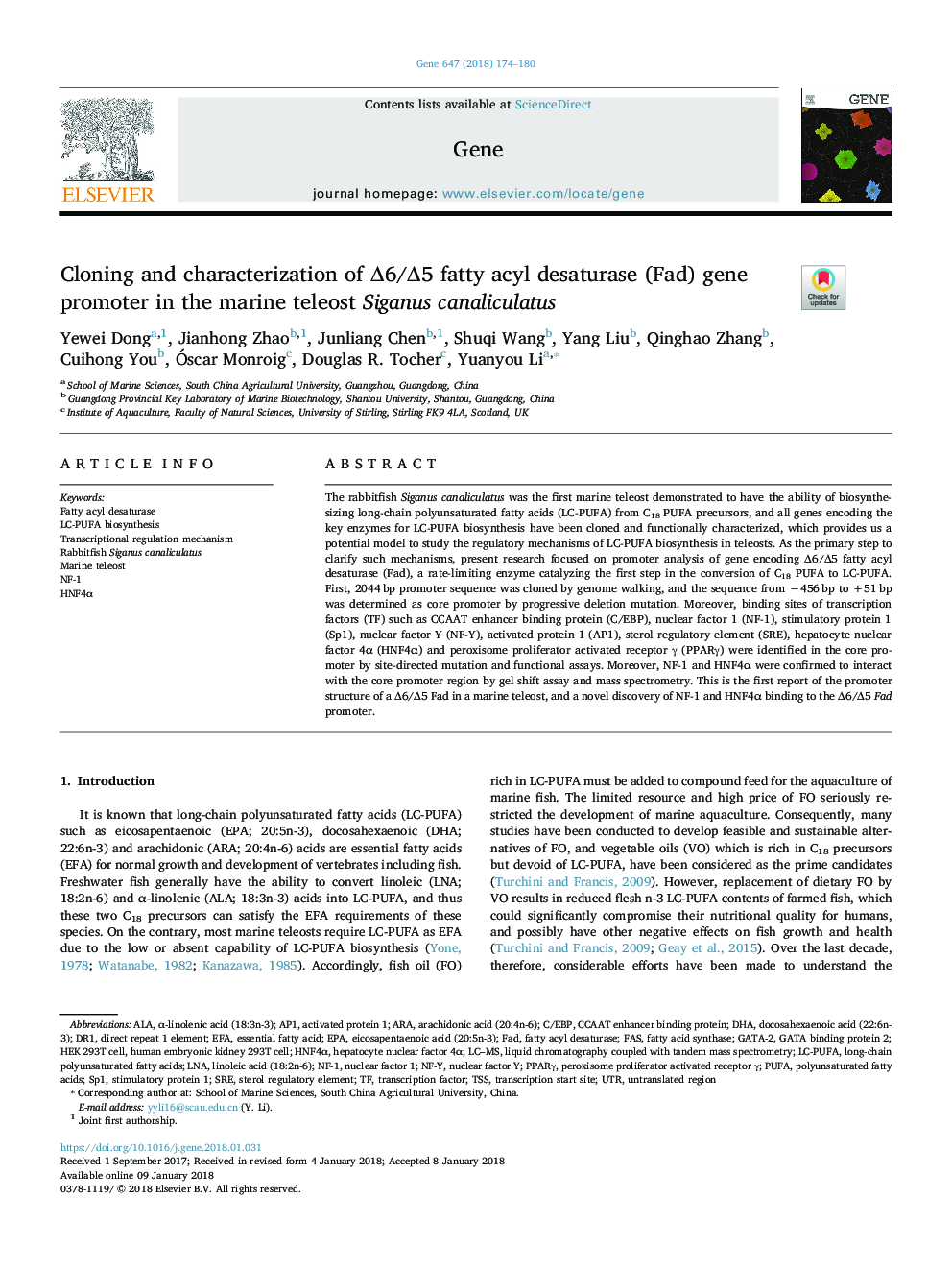| Article ID | Journal | Published Year | Pages | File Type |
|---|---|---|---|---|
| 8645631 | Gene | 2018 | 7 Pages |
Abstract
The rabbitfish Siganus canaliculatus was the first marine teleost demonstrated to have the ability of biosynthesizing long-chain polyunsaturated fatty acids (LC-PUFA) from C18 PUFA precursors, and all genes encoding the key enzymes for LC-PUFA biosynthesis have been cloned and functionally characterized, which provides us a potential model to study the regulatory mechanisms of LC-PUFA biosynthesis in teleosts. As the primary step to clarify such mechanisms, present research focused on promoter analysis of gene encoding â6/â5 fatty acyl desaturase (Fad), a rate-limiting enzyme catalyzing the first step in the conversion of C18 PUFA to LC-PUFA. First, 2044â¯bp promoter sequence was cloned by genome walking, and the sequence from â456â¯bp to +51â¯bp was determined as core promoter by progressive deletion mutation. Moreover, binding sites of transcription factors (TF) such as CCAAT enhancer binding protein (C/EBP), nuclear factor 1 (NF-1), stimulatory protein 1 (Sp1), nuclear factor Y (NF-Y), activated protein 1 (AP1), sterol regulatory element (SRE), hepatocyte nuclear factor 4α (HNF4α) and peroxisome proliferator activated receptor γ (PPARγ) were identified in the core promoter by site-directed mutation and functional assays. Moreover, NF-1 and HNF4α were confirmed to interact with the core promoter region by gel shift assay and mass spectrometry. This is the first report of the promoter structure of a â6/â5 Fad in a marine teleost, and a novel discovery of NF-1 and HNF4α binding to the â6/â5 Fad promoter.
Keywords
AP1GATA binding protein 2Eicosapentaenoic acid (20:5n-3)Linoleic acid (18:2n-6)Fatty acyl desaturaseNF-1LC-PUFA biosynthesisα-linolenic acid (18:3n-3)arachidonic acid (20:4n-6)NF-YDR1HNF4αSRELC-PUFAFASLNAEFATSSPPARγEPAALAC/EBPLC–MSSp1docosahexaenoic acid (22:6n-3)Polyunsaturated fatty acidsfatty acid synthaseEssential fatty acidPUFALong-chain polyunsaturated fatty acidsFADMarine teleostARADHAtranscription start siteTranscription factornuclear factor 1hepatocyte nuclear factor 4αNuclear factor Ysterol regulatory elementUTR یا untranslated regions untranslated regionCCAAT enhancer binding proteinActivated protein 1liquid chromatography coupled with tandem mass spectrometryGATA-2peroxisome proliferator activated receptor γ
Related Topics
Life Sciences
Biochemistry, Genetics and Molecular Biology
Genetics
Authors
Yewei Dong, Jianhong Zhao, Junliang Chen, Shuqi Wang, Yang Liu, Qinghao Zhang, Cuihong You, Ãscar Monroig, Douglas R. Tocher, Yuanyou Li,
